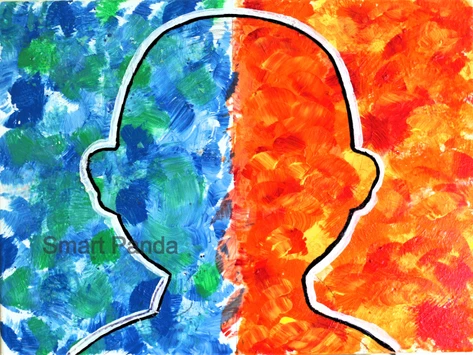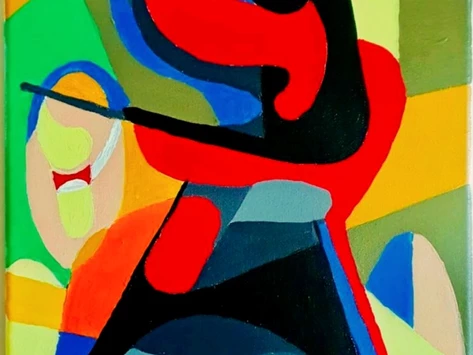In Hinduism, elephants symbolize physical and mental strength, fertility, royalty, majesty, prosperity, intelligence, keenness, and wisdom. Sri Ganesha the foremost worshiped deity and popular symbol of elephant in Hinduism where religion in terms of divine manifestation, spirituality, and animal features are intertwined. Just as elephants create their own path in dense forests Sri Ganesha is taken into account by the devout Hindu a Vighnaharta, remover of all obstacles. He is prayed to before the start of any puja or start of any new venture. The big head of an elephant with large ears and a wide mouth are suggestive of the wisdom and intellect of Sri Ganesha while the ears are symbolic of a good listener. The small eyes are said to signify the long vision and therefore the broken tusk's ability to beat the opposition.
Hindus intertwined the majestic Elephant in their lifestyle effortlessly through culture, art, and aesthetics- from paintings on caves, murals and miniatures, everyday fabrics and textiles, coins, and lots of other forms.
Elephants are the identity of Indic civilization throughout history and may be found on seals excavated from the sites of Indus Valley civilization dating as far back as 2500 BCE or earlier. Many bronze idols of elephants are found during excavations within the Saraswati river bed which are placed to be around 2500 BCE. The study of numismatics in ancient India gives ample information about Hindu practices and the relevance of elephants during various dynasties. The Mauryan dynasty had punched marked coins that had engravings of the Elephant and wheel. According to Mintage World Magazine; “Representation of elephant, bull, lion, and horse is typically found on Satvahana coins. The occurrences of those animals have different significance, either region-wise or religion-wise. These animals sometimes have relevance in accordance with a particular region. E.g. the elephant, which is found on the majority of the Satvahana coins, maybe a popular animal of South India, the region the Satvahana’s belonged to the sculptures elephants also are found at the various caves like Karle, Bedse, Sanchi, Bhrut, Amravati, etc. which belong to the Satvahana period.”
Indian dynasties throughout history gave prominence to the Elephant thanks to its symbol of royalty and majesty. The Pandya kingdom during the Sangam age had symbols on their coinage depicting the Elephant with the trident in its façade. The coins found at the Krishna and Godavari districts of the Andhra dynasty typically had the elephant roughly depicted with or without legs usually facing the right end, its trunk raised during a gesture mimicking a salute. The Kongani dynasty which finds its origins within the Chera dynasty also had its recognizing bearing with the Elephant and supplemented by the bow. Post 9th century saw a split within the Chera-Kongu dynasty and therefore the faction which established itself in Orissa is named the Gajapati dynasty.
The symbolism of Elephants within the Indic culture and their presence on everyday objects obviously is thanks to the dharmic significance which has its roots in religion. The progression from religion to spiritual and spiritual worship to breathtaking mesmerizing art forms in Indic culture may be a separate commentary in itself. Elephant as an art motif is often found in various arts like Mithila paintings, Pahari paintings of the Himachal Pradesh, and therefore the wooden or marble inlay kind prevalent in Punjab. The Elephant was transformed as motif on textiles too by Indians. The mind-boggling question -if the regalness of sarees from Kanchipuram or Patola from Gujarat is due to the fine silks & gold embroidery or the elephant motif continues even today.
Elephants carved in Hindu temples and Buddhist caves are often found almost everywhere in India. As mentioned earlier Bhimbetka caves are the oldest paintings of elephants said to be about 10,000 years old. The Ajanta cave paintings dated to be about 450 CE even have paintings of elephants. Due to the royal and majestic appearance of the elephant, many temples have elephant carvings as dwarpalas. Gharapuri Island near Mumbai which is now referred to as Elephanta caves aptly named so by Portuguese invaders in the 16th century has caves and sculptures built by Shilhara Kings between the 9th to 12th centuries. At the mouth of the island, stood a huge elephant sculpture which the Portuguese attempted to move to the most island within the 16th century but failed. The elephant was later delivered to the most island and now adorns the Bhau Lad ji Museum in Mumbai. Elephant carvings and stand-alone elephant statues are often found in Orissa temples too- just like the Sun Temple of Konark and therefore the Daksha Prajapati Temple. Darasuram near Tanjore has the Airavateswara temple inbuilt 12th AD by Rajaraja Chola. It is believed that Airavata, the elephant of Sri Indra worshiped the Lingam here and hence the Lingam is named Airavateswara.
Elephants held a cornerstone and played a crucial role altogether royal processions of Kings and temple rath yatras. Kings would dress up the elephants in royal pageantry during victory or other symbolic festival processions.




















